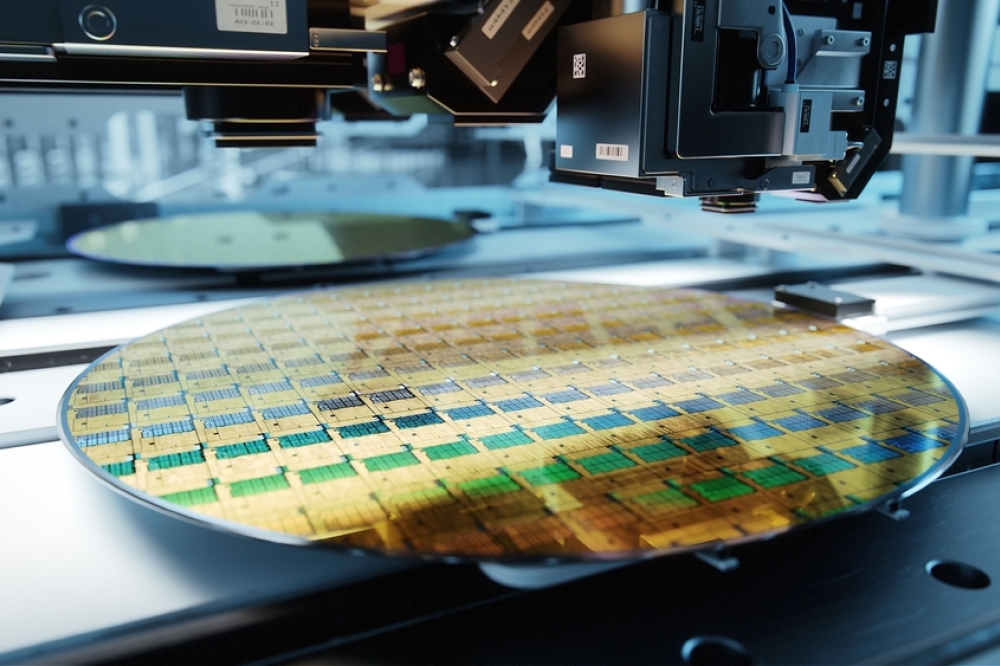Modifying wet process cleaning equipment maximizes automation benefits
Semi-customizing a variety of automated cleaning tools enhances process repeatability, throughput, and safety
To meet application specific requirements, design engineers in industries that manufacture sensitive components often need more flexibility than standard options allow for a utomating wet process cleaning equipment.
These specialized components can range from chips, wafers, semiconductors, and electronic devices to the specialized optics for world-class lasers. In fact, the more complex the equipment, the greater the need becomes for more advanced adaptable cleaning options.
Cleaning, an integral part of many manufacturing and maintenance process, is often critical to the performance of a broad range of technologies and refers to the use of agents such as solvents, acids or bases to remove unwanted particulates and other contaminates. It also refers to the etching process utilized in semiconductor fabrication, where the “cleaning” is the precision removal of thin layers of material.
Fortunately, a wide range of wet process equipment automation now exists that can more flexibly accommodate specific cleaning requirements. Modifying these automated cleaning tools to fit the application can cost-effectively enhance process repeatability, throughput, and safety. In many cases, only minor editing to the standard equipment is all that is necessary.
The benefits of cleaning process automation
“Companies that automate a cleaning process usually do so to improve process repeatability, production throughput, or safety,” says Louise Bertagnolli, president of JST Manufacturing (Boise ID). JST designs and manufactures a variety of manual to fully automated cleaning equipment, including proprietary systems that include all of the features and transfer devices required for a complete turnkey cleaning process.
Repeatability involves the ability to precisely repeat a cleaning process and is critical to maintaining quality. This includes exact measurement and dispensing of cleaning agents and rinsing solutions as well as providing the systems and tools needed to transport the cleaned items from one bath to another.
Automating the cleaning process, of course, can increase production throughput for high-volume production. If the process takes place in a cleanroom, then the entire system including motors and robotics must be appropriate for that environment.
Since production can involve moving products around above hot tanks or near chemical baths, automating can improve safety as well. Similarly, it can improve production ergonomics, for example, by eliminating the need for employees to repeatedly rotate or handle the parts being processed, which reduces the potential for injury.
How to cost-effectively automate cleaning
Determining when to automate cleaning usually depends on the stage of development of the part or product. According to Bertagnolli, while a manual cleaning process is normally utilized during R&D, when the process is defined and the company has buying customers, it is a good idea to automate. However, to successfully automate, it is often best to customize the cleaning systems to the specific needs of the application as much as possible.
“When considering job modifications, it is important to take into account the requirements for floor space, product size, production throughput, etc.,” says Bertagnolli. “Since one size does not fit all, it is crucial not to shove everybody into the same platform.” Bertagnolli cautions, however, that not every project needs to be fully customized from the ground up. Quite often standard automation platforms can be customized according to length and height and number of baths. Cleaning process design engineers can consult with automation suppliers to determine where to put the transfer system and what automation modules will fit best in the space available.
“Unlike proprietary platforms that do not allow modification, the best platforms are tried and true, but offer a range of options that utilize the same motors, actuators, and automation in an interchangeable way,” says Bertagnolli. “This allows flexibility while minimizing cost and complexity.”
This type of an approach can be successfully utilized in fully automated, special project, and semi-automated cleaning processes.
Fully automated stations
Semi to fully automated, multitask cleaning stations typically utilize at least four baths. Such stations can pick up and drop off product via robots at the baths as required, while following preprogrammed recipe sequences. However, the stations often need modification to operate most effectively. In order to allow for modification, cleaning specialists like JST offer multiple automation platforms that can accommodate various space constraints. The company can also tailor loading to the specific task by utilizing front, rear, or overhead robots with either front or side loading. Optional turntables can enable ergonomic side loading as well as rear access for ease of maintenance as well.
“For automated stations, the number of tanks; robot location, movement speed, loading; as well as sizing of everything is based on the specific requirements,” says Bertagnolli.
In regards to modifying such automated cleaning systems, the company works closely with automation partners such as Bosch Rexroth (Charlotte, NC) to develop cleaning stations using linear motion and electric drive and control technology. Recently, the two firms worked together to create an automated system for cleaning silicon chunks to the extreme purity of 11N to meet requirements for the manufacture of semiconductor chips. The project entailed building a cleaning line 138 ft. in length and incorporating multiple gantry robots.
The throughput volume requirement for the chunks was four tons for every 22-hour shift. To accomplish this, JST had to develop a unique basket system to transport the material throughout the process. To provide for such a long cleaning system, JST engineered and built it in two units. In the 24-ft-long unit, baskets of chunks are manually loaded through an auto-door. Then two-axis robots cycle the baskets through five acid etch baths and two rinse baths arranged in a single row down the length of the second unit.
Special automated projects
When automated cleaning and stripping of wafers, optics, disk drives, flat panels and other delicate parts is required for special projects, equipment is available that operates on a completely self-contained, dry-to-dry basis. One such unit is JST’s 300 CLV Cleaner and Stripping Tool. Once product is placed in the dry tank, the unit can process through either single or multiple chemical processes, rinse and dry according to a pre-programmed recipe without operator intervention or mechanical moving parts to maintain.
As an example, the National Ignition Facility (NIF) at Lawrence Livermore National Laboratories (LLNL), Livermore, CA has utilized such a tool. NIF, the world’s highest-energy laser system – a stadium-size machine – consists of 192 laser beams that will focus nearly two million joules of energy and create temperatures and pressures that exist in the cores of stars and giant planets. One of the innovations in the NIF cleaning tool – utilized in a tank-like configuration and designed to clean up to 300-pound laser optics – was eliminating the need to move the optics to different locations in order to perform the washing, rinsing and drying functions.
“Our engineers suggested that rather than transport these heavy optics for such functions, we could simply transport the chemistry (solutions) to the optics in a fixed location,” explains Bertagnolli. “We also designed a sling-like device to hold the optics and also let technicians rotate them during the inspection process.”
JST built two cleaning tools for NIF which are mirror images for the same price a traditional linear transfer tool could be built. This affords NIF double the capacity and most important, provides redundancy.
Semi-automated systems
Many processors with lower-volume throughput requirements might consider using semi-automated cleaning systems. Compared to manual systems, these provide better repeatability, faster production, and added safety. This type of cleaning system is appropriate for MEMs, LEDs and silicon applications. It is compact, software controlled, and usually easy to service. JST manufactures a standard compact semi-automated wet bench called the Tigress, a two axis, front-to-back compact system that is used by smaller semiconductor companies. A dual version of this semi-automatic system is also available. It is popular among semiconductor manufacturers that use it for cleaning, stripping, and etching of semiconductor substrates when cleaning acids, bases or solids are used to remove photoresists.
“While design engineers may be resigned to using standard, automated, wet process cleaning equipment, tailoring options to the project can significantly enhance quality, production, and safety while actually cutting cost,” concludes Bertagnolli.































